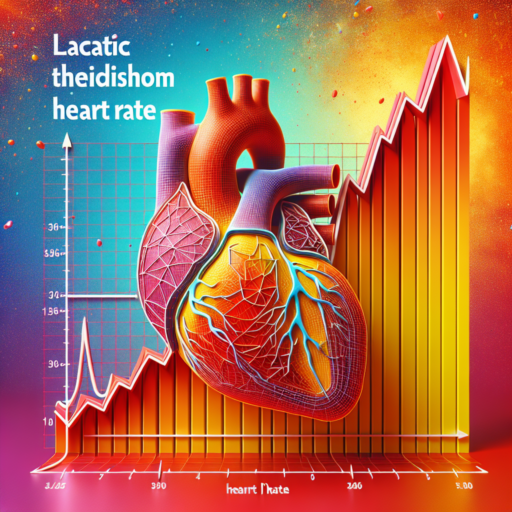What should I set my heart rate zones to?
Setting your heart rate zones is a crucial step towards achieving optimal fitness results and ensuring that you are training within safe limits. Typically, heart rate zones are divided into different categories, each targeting a specific aspect of your fitness. Understanding these zones and how to calculate your personal heart rates can greatly enhance your workout efficiency.
Your heart rate zones are determined by percentages of your Maximum Heart Rate (MHR). To find your MHR, a widely used formula is 220 minus your age. Once you have your MHR, you can calculate the different zones, which usually start from 50% of your MHR (zone 1) and can go up to 90% (zone 5). These zones target different training benefits, from fat burning to improving your cardiovascular endurance.
Identifying Your Heart Rate Zones
- Zone 1: 50-60% of MHR – This zone improves your heart’s health and is great for beginners or for warming up.
- Zone 2: 60-70% of MHR – Ideal for fat burning and building endurance.
- Zone 3: 70-80% of MHR – Enhances your aerobic capacity and stamina.
- Zone 4: 80-90% of MHR – Increases your anaerobic threshold, improving speed.
- Zone 5: 90-100% of MHR – Develops maximum effort and speed, but should be used sparingly.
Each individual’s fitness level is different, and it’s important to adjust your heart rate zones based on personal goals, fitness level, and medical advisories. Start by understanding where you currently stand and gradually adapt your training to target desired zones. Remember, consistency and gradual progression are key to safely improving your physical fitness.
What is the healthy heart rate zone for your age?
Understanding your healthy heart rate zone is crucial to optimizing workouts and monitoring your overall heart health. This zone varies by age, reflecting how your heart’s efficiency changes as you age. Generally, a heart rate zone is considered healthy if it is between 50% and 85% of your maximum heart rate. However, calculating the precise zone requires a simple formula: subtract your age from 220 to find your maximum heart rate.
For example, if you are 30 years old, your estimated maximum heart rate would be 190 beats per minute (220 minus 30). Therefore, your healthy heart rate zone for moderate-intensity physical activities would typically range from 95 to 162 beats per minute. It’s important to note that while this method provides a general guideline, individual fitness levels and health conditions can significantly influence your specific healthy heart rate zone.
To further personalize your fitness journey, many health professionals recommend consulting with a healthcare provider or utilizing a heart rate monitor to determine and adhere to your ideal heart rate zones. Pay attention to how your body feels during exercise and look for signs of overexertion, such as excessive fatigue or difficulty breathing, which may indicate that you’re pushing beyond your healthy heart rate zone.
What is the best heart rate zone for weight loss?
Finding the optimal heart rate zone for weight loss is crucial in maximizing your workout efficiency. When you exercise within this specific range, your body primarily uses fat as its energy source, promoting effective weight loss. While everyone’s body responds differently to exercise, there are general guidelines that can help you identify the most effective heart rate zone for shedding pounds.
Understanding Heart Rate Zones
Your maximal heart rate (MHR) is the key to unlocking your weight loss potential. Generally, the best heart rate zone for weight loss is between 60% to 70% of your MHR. Exercising within this range encourages your body to burn a higher percentage of calories from fat. To calculate your MHR, subtract your age from 220. From there, calculate the optimal fat-burning range by applying the 60%-70% multiplier. It’s a method backed by fitness experts for those aiming to maximize fat loss through controlled, yet effective, workouts.
Benefits of Staying Within the Optimal Zone
- Increases fat burning efficiency without overstressing the body.
- Improves cardiovascular health by strengthening the heart and lungs.
- Helps in developing endurance and stamina by promoting longer exercise sessions within a manageable intensity.
Exercising in this sweet spot not only accelerates weight loss but also ensures that your workouts contribute to overall fitness and well-being. It’s a sustainable way to approach weight loss, avoiding the common pitfalls of overtraining and injury. By keeping your heart rate in the golden zone, you can enjoy the dual benefits of effective weight loss and enhanced physical health.
What is a good running heart rate by age?
Understanding what constitutes a good running heart rate by age is crucial for maximizing workout efficiency while ensuring safety. Heart rate, the number of heartbeats per minute, differs significantly based on a variety of factors, including age, fitness level, and personal health conditions.
General Guidelines for Running Heart Rate
Generally, a good running heart rate varies by age, as our maximum heart rate decreases as we grow older. The widely accepted formula to estimate your maximum heart rate is 220 minus your age. For a beneficial aerobic exercise session, it’s recommended to maintain 50-85% of your maximum heart rate. Therefore, a 20-year-old’s ideal running heart rate may range between 100 (50% of maximum) and 170 (85% of maximum) beats per minute (bpm), while a 50-year-old’s optimal range would adjust to 85 (50% of maximum) to 145 (85% of maximum) bpm.
Age-specific Recommendations
- 20-30 years: 100-170 bpm
- 30-40 years: 95-162 bpm
- 40-50 years: 90-153 bpm
- 50-60 years: 85-145 bpm
- Over 60 years: 80-136 bpm
These figures are general estimates and should be used as a foundation for understanding one’s ideal running heart rate. It’s important to consider individual differences, as well as the impact of consistent training, which may lead to a lower resting heart rate and higher physical endurance, allowing for higher thresholds. Consulting with a healthcare provider for personalized advice is always advisable.










